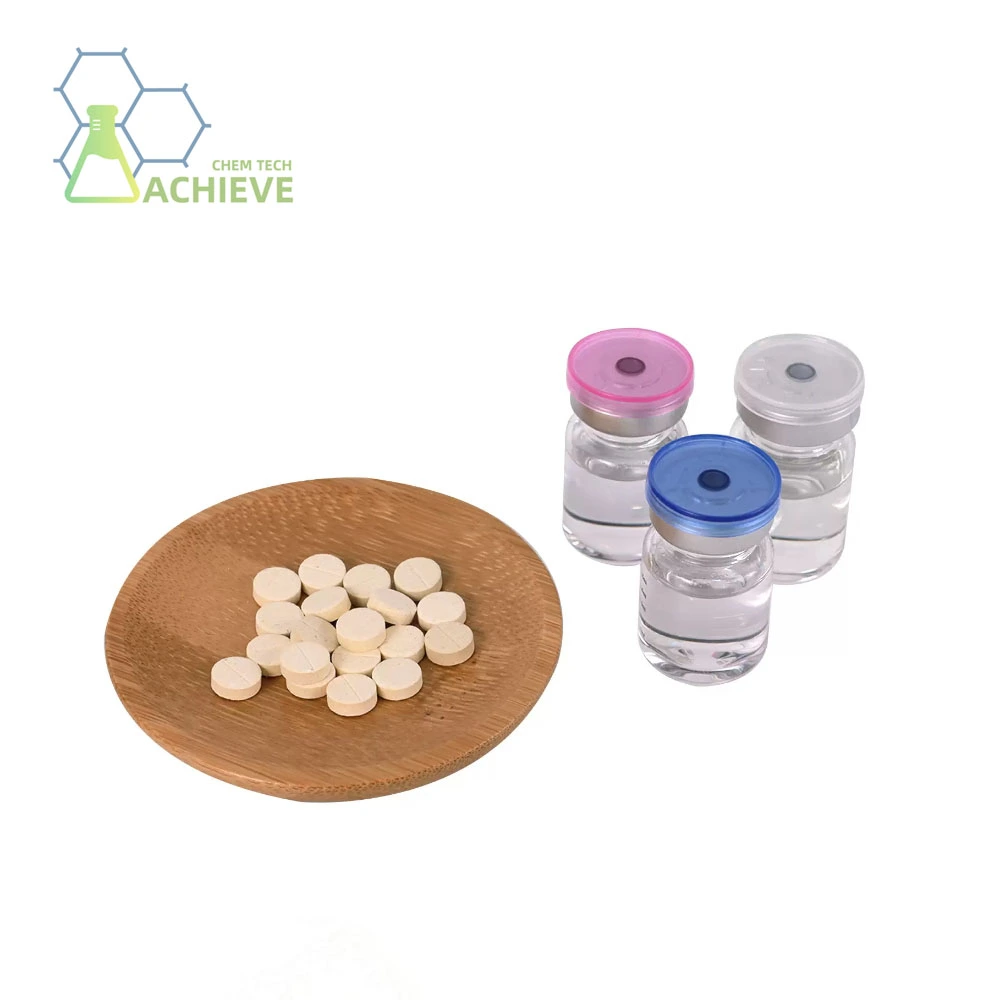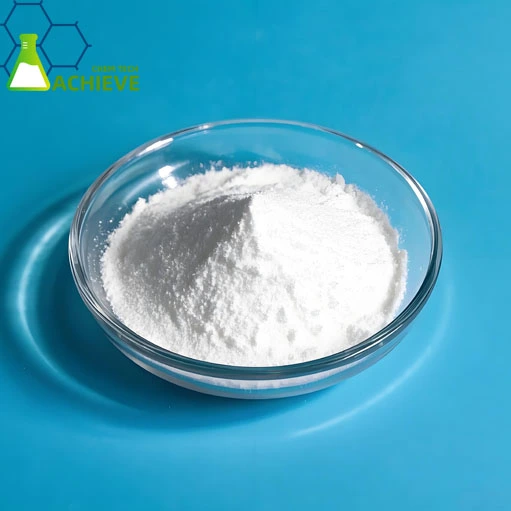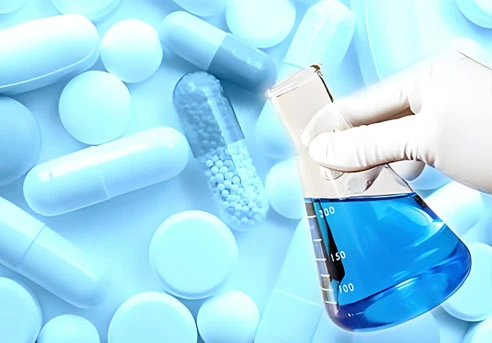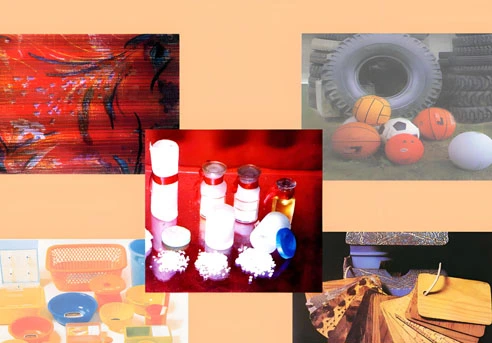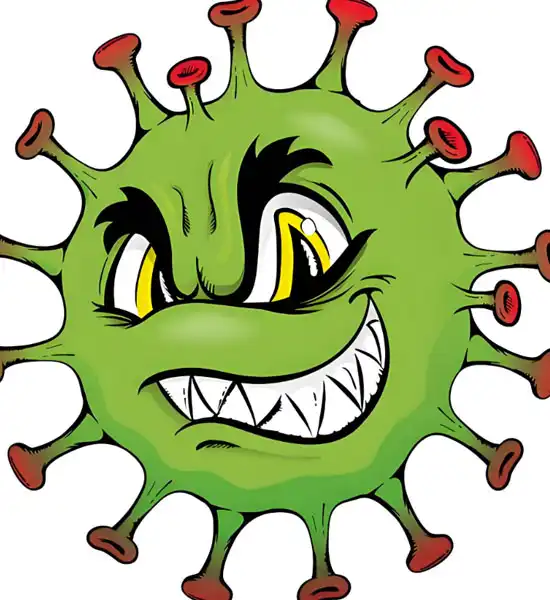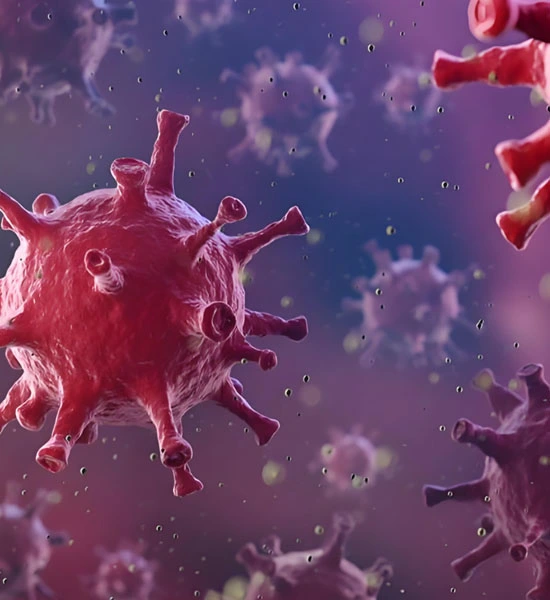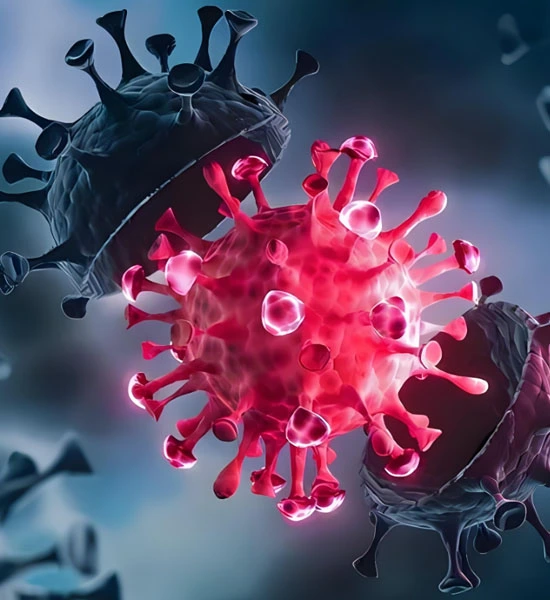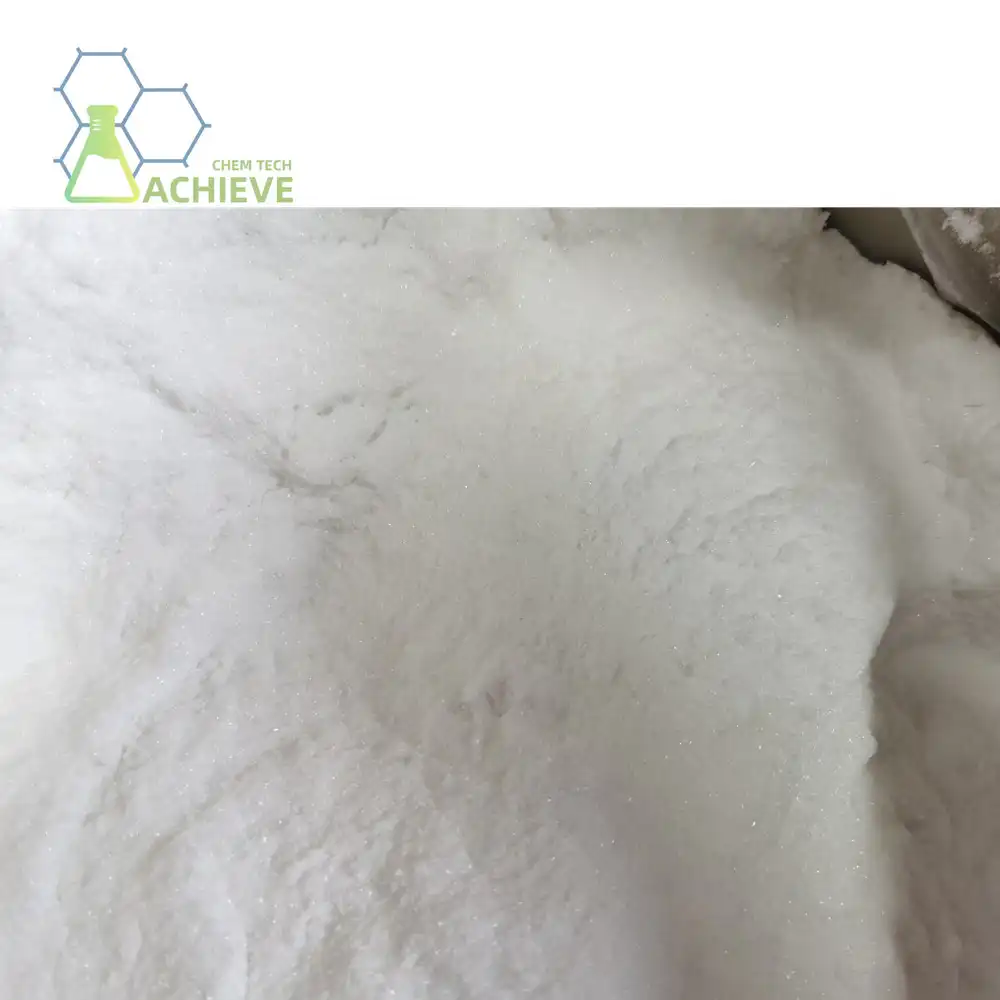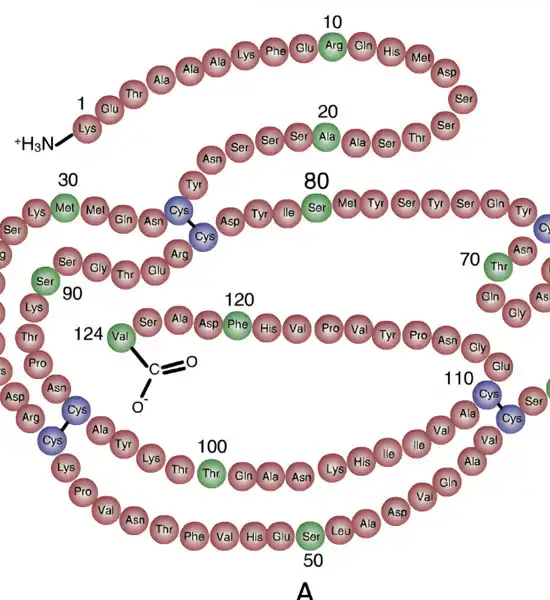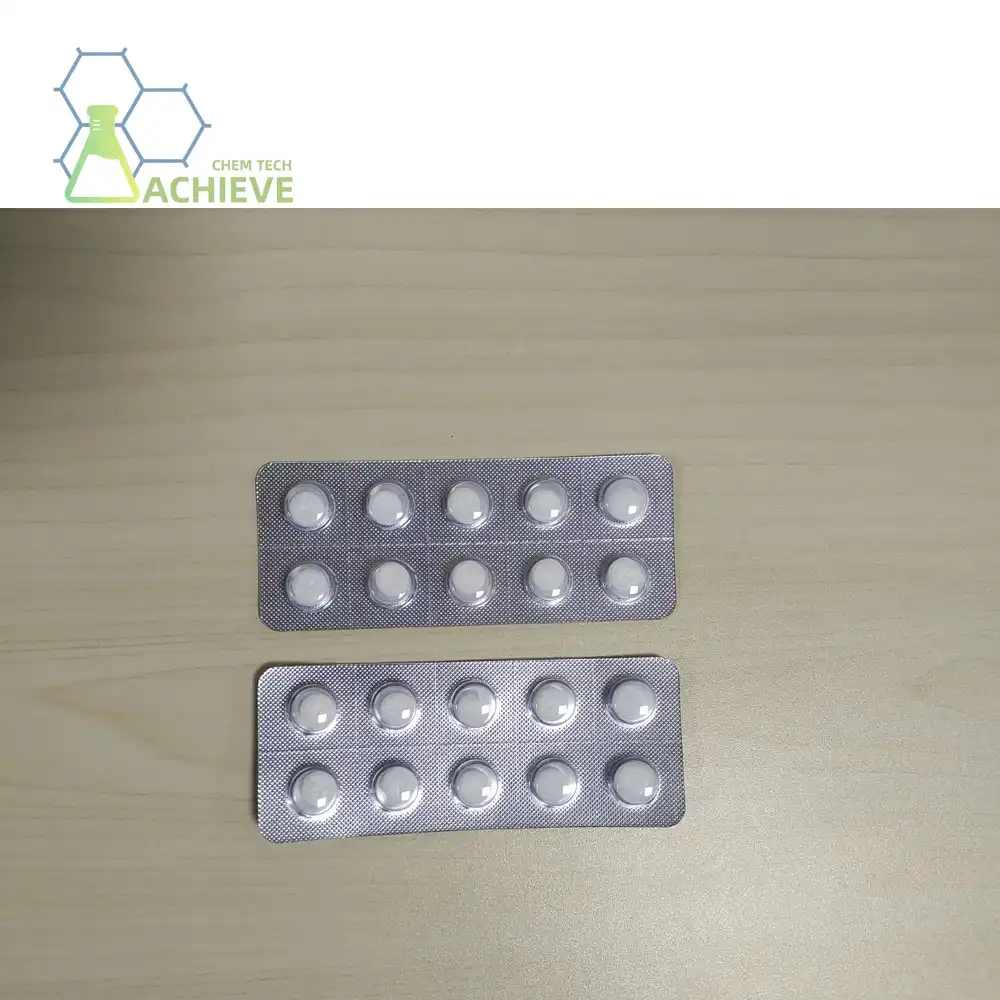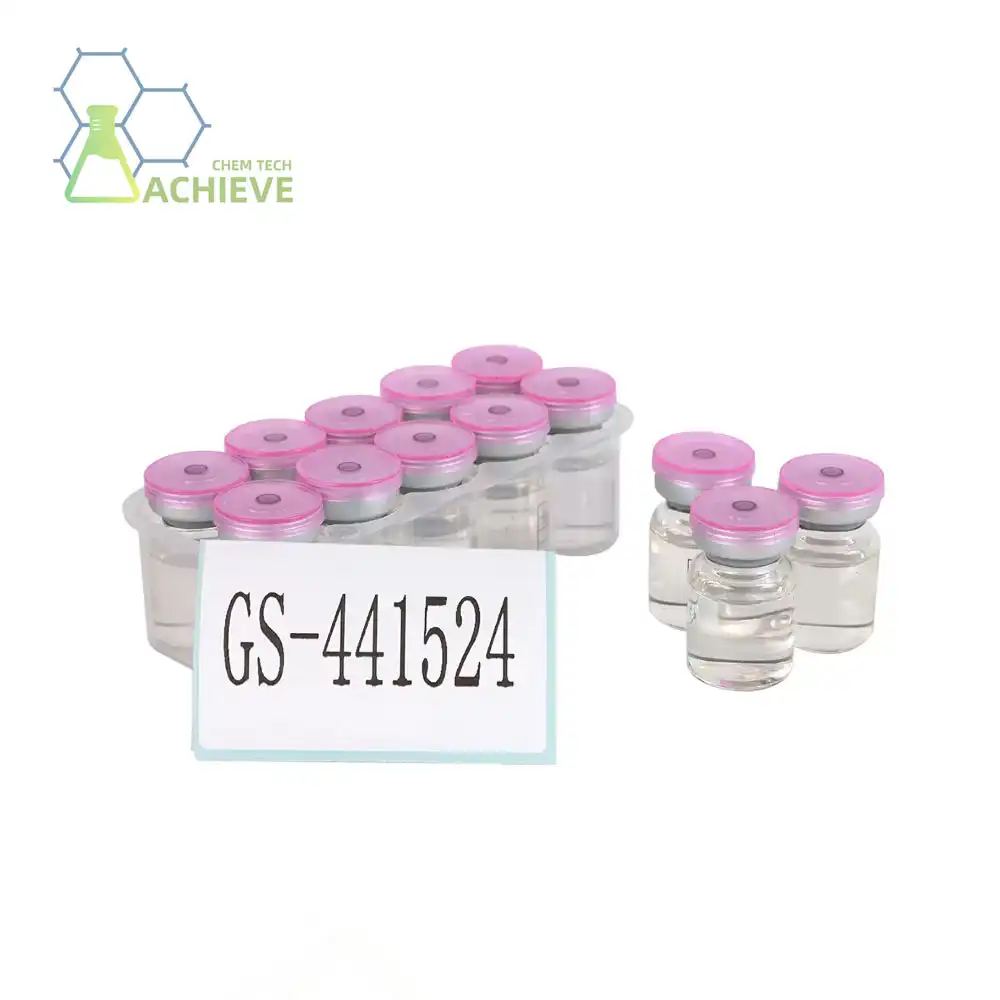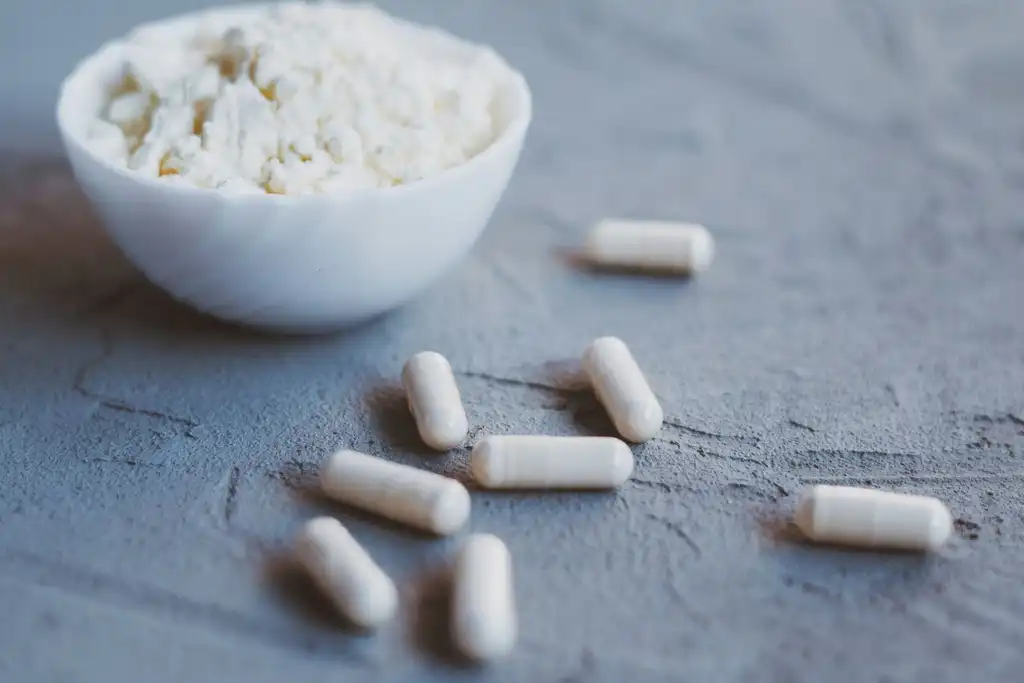What is the biological activity of GS 441524 powder?
GS 441524 powder has gained significant attention in recent years due to its potent antiviral properties, particularly against coronaviruses. This nucleoside analog has shown remarkable biological activity in inhibiting viral replication and has become a subject of intense research in the field of veterinary medicine. In this comprehensive article, we'll delve into the fascinating world of GS 441524's biological activity, exploring its mechanism of action, antiviral spectrum, and the cellular processes that activate its potent form.
|
|
|
How Does GS 441524 Inhibit Viral RNA Polymerase?
The primary biological activity of GS 441524 powder lies in its ability to inhibit viral RNA polymerase, a crucial enzyme for viral replication. This inhibition occurs through a multi-step process that ultimately disrupts the virus's ability to reproduce within host cells.
Conversion to Active Triphosphate Form
When GS 441524 enters a cell, it undergoes a series of phosphorylation steps. These modifications transform the compound into its active triphosphate form, known as GS-441524 triphosphate. This activated molecule is the true workhorse behind the antiviral effects observed in biological systems.
Competitive Inhibition of RNA Polymerase
The triphosphate form of GS 441524 acts as a competitive inhibitor of the viral RNA-dependent RNA polymerase (RdRp). This enzyme is essential for the virus to replicate its genetic material. By mimicking the structure of natural nucleotides, GS-441524 triphosphate competes for incorporation into the growing RNA chain.
Chain Termination and Replication Arrest
Once incorporated into the viral RNA strand, GS-441524 triphosphate causes chain termination. This means that the viral polymerase is unable to add further nucleotides to the growing RNA chain, effectively halting the replication process. As a result, the virus cannot produce new copies of its genome, severely limiting its ability to spread and infect new cells.
|
|
|
|
GS 441524's Antiviral Spectrum: Efficacy Against Coronaviruses
While GS 441524 has shown broad-spectrum antiviral activity, its efficacy against coronaviruses has been particularly noteworthy. This has led to increased interest in its potential as a treatment for various coronavirus infections, including those affecting felines.
Effectiveness Against Feline Infectious Peritonitis (FIP)
One of the most significant applications of GS 441524 has been in the treatment of Feline Infectious Peritonitis (FIP), a devastating disease caused by a mutated feline coronavirus. FIP pills for cats containing GS 441524 have shown remarkable success in clinical trials and real-world applications, offering hope for a previously untreatable condition.
Potential Against Other Coronaviruses
The success of GS 441524 against feline coronaviruses has prompted researchers to investigate its potential against other members of the coronavirus family. Preliminary studies have shown promising results against various coronavirus strains, including some that affect humans. However, it's important to note that more research is needed to fully understand its efficacy and safety profile for non-feline applications.
Comparative Efficacy to Other Antiviral Compounds
When compared to other antiviral compounds, GS 441524 powder has demonstrated superior efficacy in several studies. Its ability to rapidly reduce viral loads and improve clinical outcomes in infected animals has set it apart from traditional treatments. This comparative advantage has fueled further research into its potential applications beyond feline medicine.
|
|
|
|
What Cellular Enzymes Activate GS 441524's Triphosphate Form?
The activation of GS 441524 to its triphosphate form is a critical step in its biological activity. This process relies on specific cellular enzymes that catalyze the phosphorylation reactions necessary for activation.
Role of Nucleoside Kinases
The first step in activating GS 441524 involves nucleoside kinases. These enzymes are responsible for adding the initial phosphate group to the molecule. The most important kinase in this process is likely to be adenosine kinase, which has been shown to efficiently phosphorylate similar nucleoside analogs.
Nucleoside Monophosphate Kinases
After the initial phosphorylation, nucleoside monophosphate kinases take over. These enzymes add a second phosphate group to the molecule, creating the diphosphate form. This step is crucial in preparing the compound for its final activation.
Nucleoside Diphosphate Kinases
The final phosphorylation step is catalyzed by nucleoside diphosphate kinases. These versatile enzymes add the third and final phosphate group, completing the transformation of GS 441524 into its active triphosphate form. This final product is what interacts with the viral RNA polymerase to exert its antiviral effects.
Tissue-Specific Activation Patterns
It's worth noting that the efficiency of GS 441524 activation can vary depending on the tissue type. Different tissues may have varying levels of these activating enzymes, which can influence the compound's effectiveness in different parts of the body. This tissue-specific activation pattern is an important consideration in understanding the overall biological activity and potential applications of GS 441524.
Implications for Drug Delivery and Efficacy
Understanding the cellular enzymes involved in activating GS 441524 has important implications for drug delivery and efficacy. Researchers are exploring ways to enhance the activation process or bypass certain steps to improve the compound's bioavailability and effectiveness. This could lead to more targeted and efficient antiviral therapies in the future.
|
|
|
|
Conclusion
The biological activity of GS 441524 powder is a testament to the power of targeted antiviral therapies. Its ability to inhibit viral RNA polymerase through a multi-step activation process has opened new avenues in the treatment of coronavirus infections, particularly in feline medicine. As research continues, we may see even broader applications for this promising compound in the fight against viral diseases.
For pharmaceutical companies and research institutions looking to explore the potential of GS 441524 and similar compounds, Shaanxi BLOOM TECH Co., Ltd. offers high-quality chemical products and expertise. With our state-of-the-art GMP-certified production facilities and advanced purification techniques, we are well-equipped to support your antiviral research and development efforts. Whether you're in the pharmaceutical industry seeking bulk quantities of specific chemicals or a specialty chemicals manufacturer looking for innovative compounds, BLOOM TECH is your trusted partner. To learn more about our products and services, including GS 441524 powder and other antiviral compounds, please contact our sales team at Sales@bloomtechz.com. Let's work together to advance the field of antiviral therapies and improve health outcomes worldwide.
References
- Murphy, B. G., et al. (2021). "The nucleoside analog GS-441524 strongly inhibits feline infectious peritonitis (FIP) virus in tissue culture and experimental cat infection studies." Veterinary Microbiology, 253, 108872.
- Pedersen, N. C., et al. (2019). "Efficacy and safety of the nucleoside analog GS-441524 for treatment of cats with naturally occurring feline infectious peritonitis." Journal of Feline Medicine and Surgery, 21(4), 271-281.
- Gordon, C. J., et al. (2020). "Remdesivir is a direct-acting antiviral that inhibits RNA-dependent RNA polymerase from severe acute respiratory syndrome coronavirus 2 with high potency." Journal of Biological Chemistry, 295(20), 6785-6797.
- Agostini, M. L., et al. (2018). "Coronavirus susceptibility to the antiviral remdesivir (GS-5734) is mediated by the viral polymerase and the proofreading exoribonuclease." mBio, 9(2), e00221-18.

Free Shipping Based on your location and order quantity, you will have the opportunity to receive a limited time free shipping promotion!

BLOOMTECHZ
